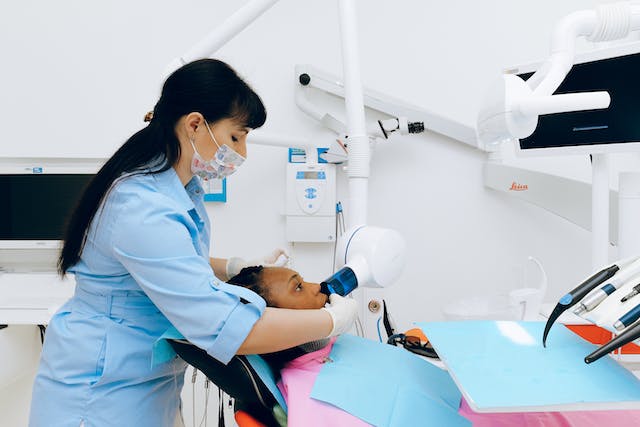Dentistry, a field that continuously evolves, relies on cutting-edge tools to provide optimal care. One such indispensable tool is the dentist drill, a device that has undergone significant transformations over the years. From its humble beginnings to the latest technological marvels, dental drills play a crucial role in various dental procedures.
Introduction
In the realm of dentistry, precision is paramount, and the dentist drill stands as a testament to this commitment. As a vital tool in dental procedures, it facilitates the intricate work required for tasks like cavity preparation, root canals, and extractions.
Evolution of Dentist Drills
Historical Background
To appreciate the significance of dental drills, a glimpse into their history is essential. Early drills were manual, requiring considerable skill and time. The advent of electric-powered drills marked a turning point, revolutionizing dental practices globally.
Technological Advancements Over the Years
As technology advanced, so did dental drills. From basic electric drills to the incorporation of air abrasion and laser technologies, dentists today benefit from precision and efficiency like never before.
Components of a Dental Drill
Understanding the components of a dental drill is crucial for both dentists and patients. The drill’s handpiece, motor, and various attachments collectively contribute to its effectiveness in dental procedures.
Types of Dental Drills
Dental drills come in various types, each serving specific purposes. High-speed drills are ideal for precision work, while low-speed drills are suitable for more controlled procedures. Air abrasion drills offer a gentler alternative for certain treatments.
Dental Drill Bits and Attachments
The bits and attachments used in dental drills vary based on the procedure at hand. From diamond-coated bits for cutting to special attachments for polishing, each plays a vital role in ensuring successful outcomes.
Dentist Drill Techniques
Dental drill techniques involve more than just drilling. Dentists employ a range of precise movements to achieve optimal results while prioritizing patient comfort and safety.
Advancements in Drill Technology
In the ever-evolving landscape of dentistry, technological advancements continue to shape the use of dental drills. Laser technology and computer-aided systems enhance precision, making dental procedures more efficient and less invasive.
Common Dental Procedures Using Drills
The dentist drill is a versatile tool employed in various dental procedures, including cavity preparation, root canal treatments, and tooth extractions. Its adaptability makes it indispensable in modern dentistry.
Patient Experience and Comfort
Dental anxiety is a common concern, and dentists recognize the importance of patient comfort. Techniques such as sedation and advanced pain management contribute to a more pleasant experience for patients undergoing drilling procedures.
Safety Measures in Dental Drilling
Safety is paramount in dental practices. Dentists adhere to strict infection control measures and utilize protective gear to ensure the well-being of both themselves and their patients during drilling procedures.
Challenges and Criticisms
While dental drills are indispensable, they are not without challenges. Concerns such as noise, vibration, and their environmental impact have sparked discussions within the dental community regarding potential improvements.
Future Trends in Dental Drilling
Looking ahead, the future of dental drilling holds exciting possibilities. Anticipated advancements include the integration of artificial intelligence, promising even greater precision and efficiency in dental procedures.
Choosing the Right Dental Drill for a Practice
Selecting the right dental drill for a practice involves considering various factors, including the type of procedures performed and customization options. Dentists have a range of choices to meet their specific needs.
Famous Innovations in Dental Drilling
Throughout history, innovative minds have contributed to the evolution of dental drills. Notable inventors and their groundbreaking contributions have left an indelible mark on modern dentistry.
Conclusion
In conclusion, the dentist drill stands as a cornerstone in the practice of dentistry. Its evolution from manual tools to sophisticated, high-tech devices underscores the commitment of the dental community to precision and patient well-being. As we navigate the future, the continued pursuit of innovative dental technologies ensures that dentists can provide optimal care to their patients.
Frequently Asked Questions (FAQs)
- Are dental drills painful? Dental drills may cause some discomfort, but advancements in pain management techniques ensure that patients experience minimal pain during procedures.
- How do dentists minimize noise during drilling? Dentists use modern, noise-reducing technologies in their drills and may provide ear protection to minimize noise-related discomfort.
- Can dental drills be used on children? Yes, dental drills are commonly used on children, especially for procedures like cavity fillings. Dentists take extra care to ensure a comfortable experience for young patients.
- Are there alternatives to traditional dental drills? Air abrasion drills and laser technology are considered alternatives to traditional dental drills for certain procedures, offering gentler options.
- What role does infection control play during dental drilling? Strict infection control measures, including the sterilization of drill components, are implemented to prevent the spread of infections during dental procedures.

